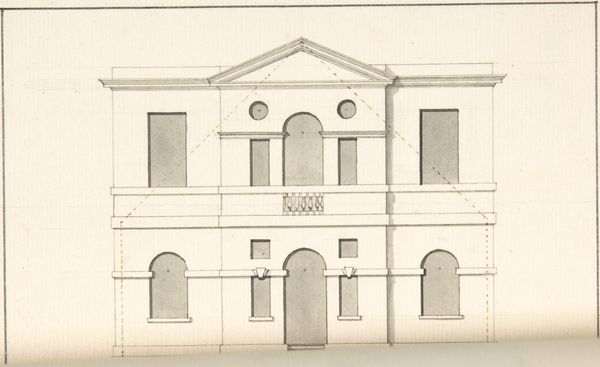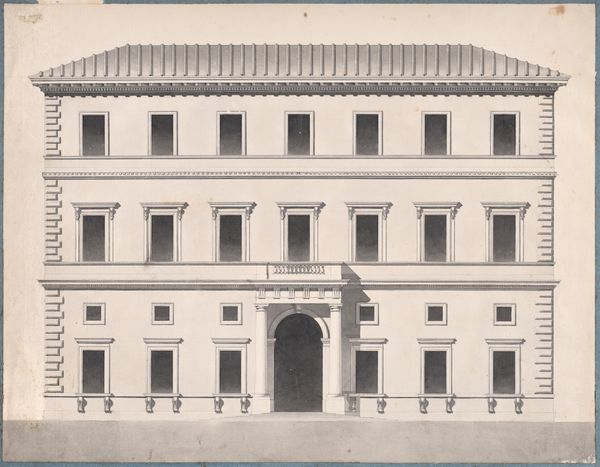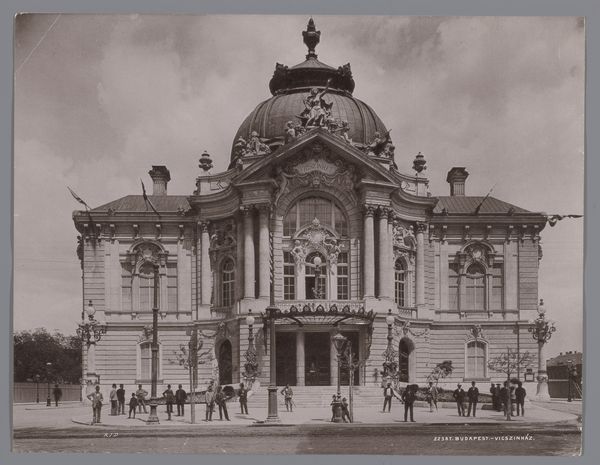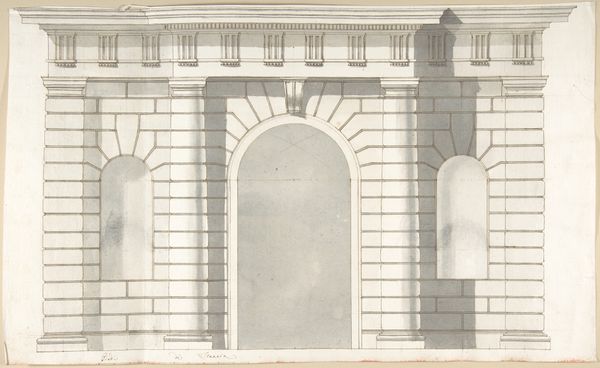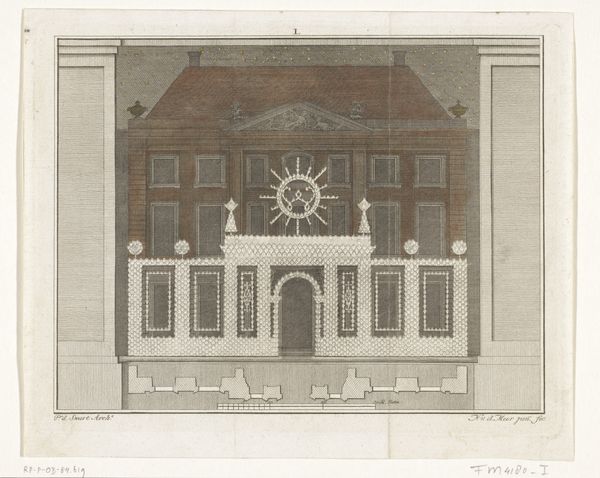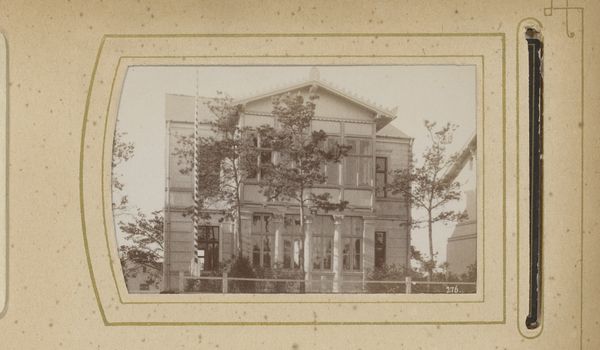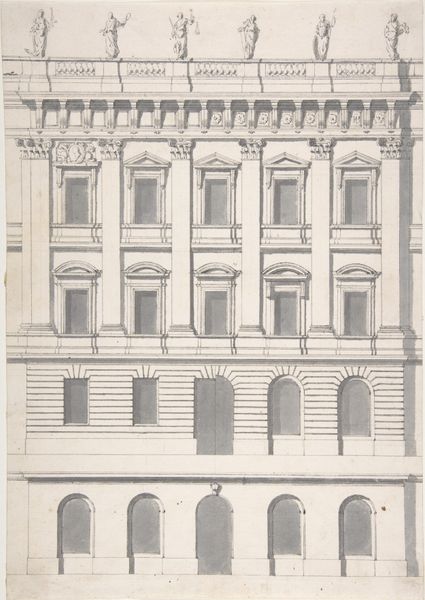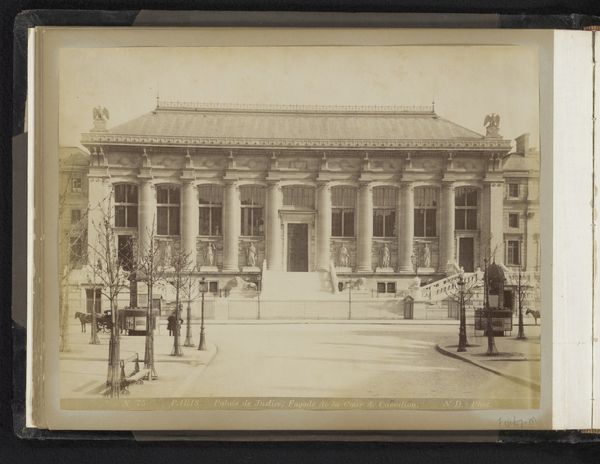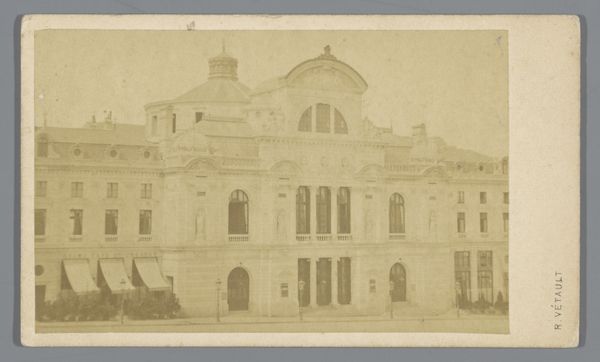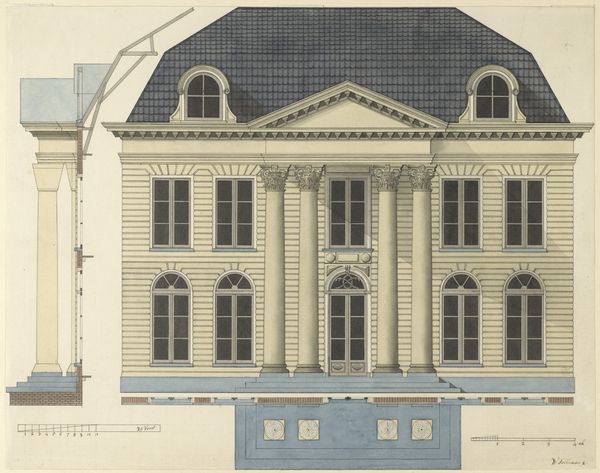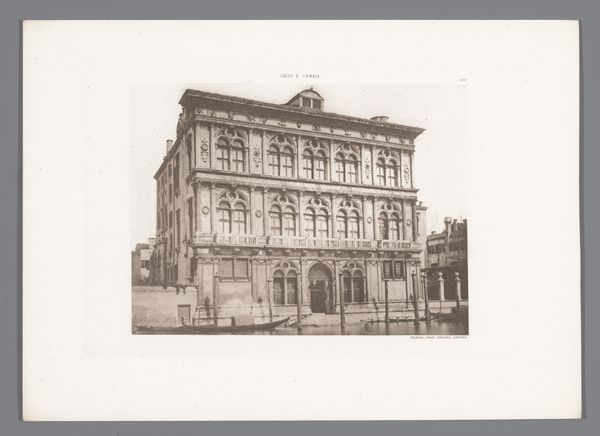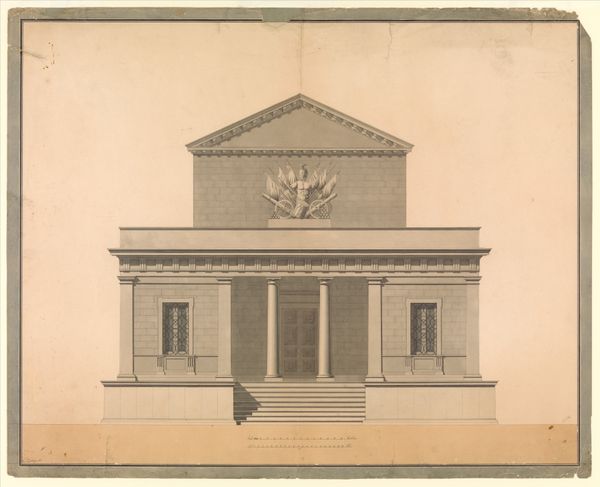
drawing, architecture
#
architectural sketch
#
drawing
#
neoclacissism
#
architectural modelling rendering
#
historic architecture
#
traditional architecture
#
architectural drawing
#
architectural proposal
#
cityscape
#
architecture
#
historical building
#
statue
Dimensions: height 317 mm, width 585 mm
Copyright: Rijks Museum: Open Domain
Curator: This delicate drawing from around 1800-1900 presents a design for a classicist building, most likely intended as a theatre. The architect behind it is David Gilly. Editor: It looks so severe. All those perfectly aligned windows and columns… It gives me a sense of rigidity, almost as if culture is something imposed rather than embraced. Curator: That’s a fascinating take. The neo-classical style was certainly used to project power, but it was also associated with Enlightenment ideals. Buildings like this theatre were meant to make culture accessible to the public. Editor: Accessible, but also controlled. Neo-classicism often appears in periods of empire-building. The style can seem inherently… excluding, emphasizing a connection to ancient Greece and Rome which weren’t particularly known for diversity or gender equality. Curator: Yes, the allusions to antiquity were key. Gilly, and other architects of the time, would have wanted to evoke the gravitas and perceived order of those earlier societies. Public buildings especially needed to reflect that sense of enduring stability. Editor: Still, look at the way the windows are arranged, and the statue centered at the very top of the building - the visual language reinforces a clear hierarchy. It silently dictates how one should experience and engage with the space. Who had access and on what terms? These spaces, beautiful as they were, likely perpetuated existing social stratifications. Curator: I concede that buildings can act as mechanisms for reinforcing societal structures. Still, seeing such precise planning… Knowing Gilly’s reputation for integrating functionality with aesthetics gives me a feeling of restrained optimism about what this structure might have contributed in its time. Editor: Well, I will also recognize that every building occupies a space in a longer cultural narrative; whether it serves as a catalyst for progressive change or upholds outdated practices depends on how we, as a society, choose to utilize it moving forward. Curator: A pertinent reminder to consider the role of architecture, even in these beautiful historical renderings. Editor: Exactly. Thinking critically about these designs helps us engage more consciously with the built environment around us today.
Comments
No comments
Be the first to comment and join the conversation on the ultimate creative platform.
